#serpent yoni
Explore tagged Tumblr posts
Text
Serpent 𓆗 deities
Deity: The Naga
Ashlesha
Planetary rulership: ☿ is the lord in the lunar ruled sign, ♋︎


Deity: Ahirbudhnya
Uttara Bhadrapada
Planetary rulership: ♄ is the lord in the Jupiter ruled sign, ♓︎


Serpent 𓆗 Yonis
Animal yoni: male serpent
Rohini
Planetary rulership: The ☽ is the lord in the Venusian ruled sign, ♉︎


Animal yoni: female serpent
Mrigashira
Planetary rulership: ♂ is the lord in the Venus ruled sign, ♉︎, and the Mercury ruled sign, ♊︎


#serpent yoni#serpent deity#ashlesha nakshatra#Uttara bhadrapda nakshatra#rohini nakshatra#mrigashira nakshatra#sidereal cancer#sidereal pisces#sidereal taurus#sidereal Gemini#vedic astrology
173 notes
·
View notes
Text
Vedic Astro Thought,

(Warning: i do not edit these and I will NOT be trying, so just read please lol.)
I’m starting to suspect serpent yonis need to stick together. As a girlie with a rohini mars chart ruler, and having learned about the myths surrounding rohini and mrigashira, that curse of attention for serpent yonis is genuinely unbearable. I thought it was a Venusian or Nodal condition, but neither of them have the sense of vulnerability and danger of a serpent yoni’s ability to intrigue and attract attention without even trying. Imagine you’re a snake in the park, enjoying the grass and nature, wanting to have a nice little day, maybe eat a mouse or two, who knows, you’ll figure it out. Then you slither into a family barbecue, and suddenly everyone’s screaming, trying to stomp you, etc, or maybe a small group of people find you and are fascinated, so fascinated they poke and prod you, maybe they’re a bit rougher, and you have to lie there because if you even react slightly they’ll attack because they’re afraid of you, and all the while you’re just a tiny little snake!
I thought of this because of Hidden Octave’s Rohini video on YouTube, which I absolutely relate to, but I felt a bit out of place because I’m not someone who’s actively courted or sought attention, it was inflicted on me by everyone around me. I was abused, bullied, attacked for no reason but grown adults, and object of peers sexual interest as a child, and it seemed like if I asserted myself even slightly, I was suddenly the most terrifying thing in the room when I’ve been “playing dead” the entire time. I’ve found this has made dating impossible for me because I am so traumatized by how people react to me that I can’t even be myself anymore (trying to get back to it though) because I now automatically doctor myself to NOT provoke, because all it brought is danger, drama, and mess.
I have also been the provocateur in cases though, not because I was desperate for attention, but because I took difficulty connecting as REAL potential because that person didn’t inflict all their reactions and fears that had onto me immediately until I sought them out further, then I realized I had just found a milder version of all the people who mistreated and misunderstood me before—but the one person that stuck with me as someone I genuinely felt a connection to was a fellow serpent yoni: our rohini mars conjuncted. The moment we met and it became even vague knowledge we had interest in each other, drama from everyone around us ensued and it bled into our already unformed but genuine connection because we were both victims of the same burden of the inherent ability to intrigue and provoke. Unfortunately the guy was also saturnian and lunar, so he was very internally unbalanced and I have had to move on for my own sake to find someone I deserve, because he has a long was to go before he realizes the drama isn’t a part of him, just a reaction to him. It’s hard to unlearn, but only another serpent yoni really gets it. You’re not even doing anything, and everyone seems to watch every move you make while also being repelled if you come too close.
Which brings me to my point. In America, there’s a famous couple from a sitcom called The Office; their names are Jim and Pam. The actor Jim was a national heartthrob in his heyday as the character and has went on the make pretty good movies, the actress for Pam pretty much did that show and nothing else really big happened for her, but she did well, but she hasn’t really moved on from the glory days from what people seem to say about her—even alleging that she’s a bit obsessed with Jim’s actor in real life to the point he had to publicly “shut her down���. Jim’s actor is a Rohini, Mrig, and Magha (hence his “glory”) guy, while Pam’s actor is Dhanishta, some Jupiter influences, but not that much serpentine energy, just a rohini mars. I find the lunar aspect of rohini so compelling because when that energy holds you, you’re genuinely in some different reality, but because of how that serpent yoni energy intoxicates you. Of course if you’re also serpentine, it also violently rubs salt into the wound of how hard it is to find someone you genuinely connect with, but hey, I digress, I swear I’m totally fine and not having an existential crisis about love right now.
I find it hilarious how that reactionary pattern just KEEPS happening in different octaves; apparently between them as cast members, then Jim’s actor as the heartthrob boy next door in love with the married girl (rohini and its love triangles), and the married girl stuck in a marriage that she is miserable and used as an ego crutch in. I mean, sure, Pam is great, but it wasn’t her longing, her clinging to something that just felt right that made the story so romantic, it was all Jim from the start keeping it alive, because if Pam didn’t luckily love him back that boy would’ve been stuck. He “moves on” in the show, and does it easily because he can, and he enjoys the company, but it doesn’t matter because it’s so empty. He’s so kind and loving for Pam because he feels safe and at home, but he can’t just sit around for a woman who turned him down, right, so the serpent has to find another place to hide in. He clicks well with anyone because that’s what serpent yonis do. We can react with you and mirror but that’s just because we’re conditioned that way because of how the world treats us from a young age, not because you’re special. And it’s hard to watch him try to move on when he so clearly just can’t detach—think of two serpents intertwined, that’s the way I think we serpent yoni types want to love. An eternal, safe, vitalizing embrace. Snakes are cold-blooded but they are creatures like the rest, but for some reason unbeknownst to it, the other creatures don’t seem to agree, and all the snake wants is to find a little home, hunt, and live in peace.
This ISN’T to say we don’t know what we’re doing when we’re doing it, but when we’re not doing anything, we’re still somehow “doing it”, specifically for Rohini because Lunar influence is rife with confusion and illusion. All you want is to be out of the darkness, to know that the shadows aren’t scary, that you can come out too and be yourself in all your snake-ness, but it never seems to be over, the curse of attention, and the madness just seems to follow you. Whether it’s from the world or the budding madness in yourself from never finding solid ground to just see everything clearly for a moment and make sense of things. It’s a hellish trap of constant reaction (which I personally hate, hence why I consider it hell).
I was also surprised by the YouTube comments and the intense shift in sentiment around Jim and Pam from the show. It used to be THE dream romance, people wanted their own Jim, people wanted their own Pam, people wanted to be Jim and Pam. NOW, people seem to hate them. Now they’re pretentious, uppity, the worst ones out of the show for their light transgressions while all the insane people are still acceptable to make space for. They’re literally just the “normal” characters in a sitcom with a sweet love story, and people lose their fucking MINDS about them, when they are literally not even that special. They just love each other deeply, and that simple truth creates a labyrinth of envy and intrigue, and I see that pattern for rohinis and serpent natives often. They are just themselves, it’s very nice, and no can seem to handle it normally.
Jim and Pam are sweet. Jim is sweet with normal human character flaws, but it seems everyone (even in the show lol, go watch) is hellbent on making him something more provocative, chaotic or malicious than he actually is, which is just extremely rohini. Hi, Norma, hi, Marilyn. We never get a break until it kills us or we find our “charmer” we can trust and love without fear of the curse rearing its ugly head again. Sometimes it just kills us.
In my opinion, serpents need their snake charmer, who can dance with them without fearing their differences, or a fellow serpent. Considering the state of humanity right now—maybe look for fellow snakes instead of a magical “charmer”, someone “normal” and grounded like Pam is for Jim in that example, or like the non-flashy guys Marilyn Monroe married. We want to be seem and understood, but I think we can only understand each other. If you’re a serpent yoni maybe keep out an eye for people with that nakshatra energy in their chart, because they won’t be as oddly disturbed and provoked by you like the others probably are. It’s hard enough out there, so use cheat codes. Life is shit and we make it better out of luck, faith and perseverance. And love, of course. 🥰
From a friend. :)

#vedic astrology#vedic astro notes#rohini nakshatra#rohini#serpent yoni#mrigashira#vedic astro observations#personal#astrology#witchcraft#spiritually#me
58 notes
·
View notes
Text
Vedic Astrology Primer:
Introduction:
1.Beginner's Guide To Vedic Astrology
2. A Basic Guide To Nakshatras
3. Vedic Astrology Books
Observations:
my first vedic post :-)
mongoose yoni, hasta girlies and retro vibes 🐀💃🏼👯♀️
bimbos, venusians and mermaids 🧜🏼♀️👭
simple observations
vedic analysis of singers, fairies and cougars 👀 🎶🧚🏼♀️
butterfly motif and vedic astrology 🦋
the astrology of big boobs and mistresses 🌕🌕
courtesans and great actors🥵🎭
actors, desirable women and muscle daddies 🎭💃🏼💪🏼
why are cancer girlies so in demand 🦀♋
muscle men and ingenues 🤪🧚🏼♀️😩
nice guys, loners, unhappy childhoods 🤓🥰
snakes, scorpios and sex workers 🐍🦂
serpents, trophy wives and nose jobs 🐍🤰🏼👃🏼
Random Vedic Astrology Observations
pt 2 of random vedic observations
Random Astrology Observations
Vedic Observations
Wealth giving naks & Revati's kinky side
Appetite in Astrology
Are Rashis As Important As Nakshatras?
Random Astrology Observations
K-Pop Astrology:
BTS rising sign speculation
BTS & their celeb crushes
Blackpink Rising Sign Speculation
Pisces Influence on Kpop
BTS & Their Possible Vedic Rising Signs pt 2
RM New Album is Vishaka Coded?
Jennie is a Jyeshta Rising?
Vedic Symbolism & Imagery:
a cool vedic post about symbols and motifs
angel imagery in vedic astro 👼🏼🧚🏼♀️
Astrology of Appearance:
The Astrology of Appearance
The Astrology of Appearance pt 2
The Astrology of Appearance pt 3
Astrology of Doppelgangers
The Astrology of Beauty Marks
Doll Beauty in Astrology
Hourglasses: The Astrology of Body Types ⏳🥵💃🏼
Astrology of Appearance: Yoni Animal Edition
Cancer Girls & Baby Voice
Rahu & Ketu eyes
Yin vs Yang Eyes
Appearance Analysis: Angelina Jolie
Lunar men and their eyes
Lunar men and their eyes pt 2
#astrology notes#vedic astro notes#sidereal astrology#astrology observations#nakshatras#vedic astrology#astro notes#astro observations#astrology#astroblr
254 notes
·
View notes
Text
Ashlesha - 'the embrace', 'ensnared' 'entangled', the serpent, cat yoni... 🐍🤍 (𝓈𝓎𝓂𝒷𝑜𝓁𝒾𝒸 𝒶𝓈𝓉𝓇𝑜𝓁𝑜𝑔𝓎)
nobody:
Ashlesha:









Into the Woods: Johnny Depp; Ashlesha Ascendant depicting the 'big bad wolf'; buuut kinda lookin more like a sexy cat lmao
Marilyn Monroe: Ashlesha Ascendant
Lana Del Rey: Ashlesha Moon
Tangled: Rapunzel is voiced by Mandy Moore, Ashlesha Moon as per Mid-Mula Galactic Center ayanamsa
Pirates of the Carribean: Jack Sparrow, portrayed by Johnny Depp; Ashlesha Ascendant
'You Spin me Right Round' music video; depicting 'Dead or Alive's vocalist; Pete Burns who is Ashlesha Sun conjunct Mercury
Lyrics from 'Hallelujah';
'she tied you to a kitchen chair, she broke your throne and she cut your hair' by Leonard Cohen with Mars & Ketu in Ashlesha
'I don't like the Drugs, but the Drugs Like me' music video; depicting Marilyn Manson, Ashlesha Sun
🤍
I love doing posts like these and exploring these symbolic connections because it shows how raw and real the Nakshatras are in our physical reality! As much as I adore analysing personality, emotional patterns, etc; sometimes we don't need complex, university grade psychoanalytic analysis to spot Nakshatras- in fact, I find Nakshatras are best understood through looking at the symbolism that is effortless and natural in our everyday lives. The art people create, the clothes they choose to wear, the imagery & sensations that intuitively come to mind when you think of x person.
I think sometimes when we get lost in the labelling of Nakshatras or anything astrological (Rahuvian), it gets more confusing, when really a lot of the most meaningful gems of knowledge are very simple and visceral (Ketu). Some of the most revered 'words of wisdom', are sayings & symbolic musings that are actually extremely obvious- like kindergarten level- it's just that the hard part is to be a human and not get lost in the madness. To silence the mind.
The language of the esoteric realm is abstract, much like our dreamscape. Sometimes words cannot convey it all- but the symbolism is key. I think any of us who take interest in these topics can vouch for feeling that words & logical analysis come secondary to receiving the symbolic, intuitive information when it comes to anything occult related.
Thankyou for reading as always! <3
#nakshatras#astrology#vedic astrology#ashlesha#symbolism#esoteric#spirituality#sidereal astrology#sidereal zodiac#vedic astro observations#vedic astro notes
116 notes
·
View notes
Text

Graal of Babalon Talon Abraxas WARATAH BLOSSOMS (from The Book of Lies, by The Master Therion) Seven are the veils of the dancing girl in the harem of It. Seven are the names and seven are the lamps beside Her bed. Seven eunuchs guard Her with drawn sword; No man may come nigh unto Her. In Her wine-cup are seven streams of blood of the Seven Spirits of God. Seven are the heads of The Beast whereon She rideth. The head of an Angel: the head of a Saint: the head of a Poet: the head of an Adulterous woman: the head of a Man of Valour: the head of a Satyr: and the head of a Lion-Serpent. Seven letters hath Her holiest name; and it is This is the Seal upon the Ring that is on the Forefinger of IT: and it is the Seal upon the Tombs of them whom She hath slain. Here is Wisdom. Let Him that hath Understanding count the Number of Our Lady; for it is the Number of a Woman; and Her Number is An Hundred and Fifty and Six. On this chapter, Crowley writes: 9 is the square of 7. 7 is the passive and feminine number. The chapter should be read in connection with Chapter 31 for IT now reappears. The chapter heading, the Waratah, is a voluptuous scarlet flower, common in Australia, and this connects the chapter with Chapters 28 and 29; but this is only an allusion, for the subject of the chapter is OUR LADY BABALON, who is conceived as the feminine counterpart of IT. This does not agree very well with the common or orthodox theogony of Chapter 11; but it is to be explained by the dithyrambic nature of the chapter. In paragraph 3 NO MAN is of course NEMO, the Master of the Temple, Liber 418 will explain most of the allusions in this chapter. In paragraphs 5 and 6 the author frankly identifies himself with the BEAST referred to in the book, and in the Apocalypse, and in LIBER LEGIS. In paragraph 6 the word "angel" may refer to his mission, and the word "lion-serpent" to the sigil of his ascending decan. (Teth = Snake = spermatozoon and Leo in the Zodiac, which like Teth itself has the snake-form. theta first written {Sun} = Lingam-Yoni and Sol.) Paragraph 7 explains the theological difficulty referred to above. There is only one symbol, but this symbol has many names: of those names BABALON is the holiest. It is the name referred to in Liber Legis, 1, 22. It will be noticed that the figure, or sigil, of BABALON is a seal upon a ring, and this ring is upon the forefinger of IT. This identifies further the symbol with itself. It is…said to be the seal upon the tombs of them that she hath slain, that is, of the Masters of the Temple."
46 notes
·
View notes
Note
Hi!its my chart😊
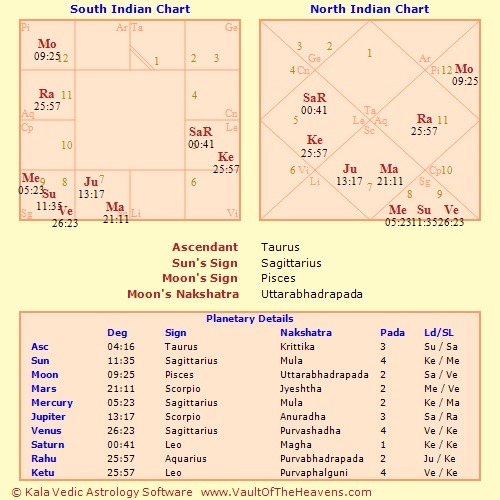
Hello, thanks for participating.
Your divine archetype:
🌊🐉❄ The gentle, strong and purifying raw feminine⚔🕊🔥
Your goddesses:
Before I list them, I want to say that these first few goddesses are archetypically extremely similar and relate to your moon nakshatra_ Uttara Bhadrapada. Upon reflecting on your chart, I can filter out one or two that fit better with your unique energy overall, but you might connect with others more. Trust yourself
Frigg_ Norse goddess of love, marriage, fate, spinning, childbirth.
A well known figure in Norse mythology, wife of Odin, the highest standing deity in the pantheon(rivaled only by Freya). Frigg herself is a very influential figure, but her presence and power are still and silent.
Frigg carries a girdle and keys. She holds secrets but never speaks of them, and is said to know the fate of everyone and everything.


Her archetype is basically the same as that of Greco-Roman Hera/Juno. Although their husbands(Zeus and Jupiter) are the same archetype as Thor, unlike the Norse thunder god they're the highest standing in their pantheons. (In greek mythos the possible archetype of Odin_ Kronos had been defeated). And these goddesses are all their counterparts.
Another similar goddess who could be places within that archetype is Hathor, Egyptian goddess of motherhood, sky, love, dance, pleasure. She is often symbolised by and depicted as a cow, Uttara Bhadrapada's yoni animal.
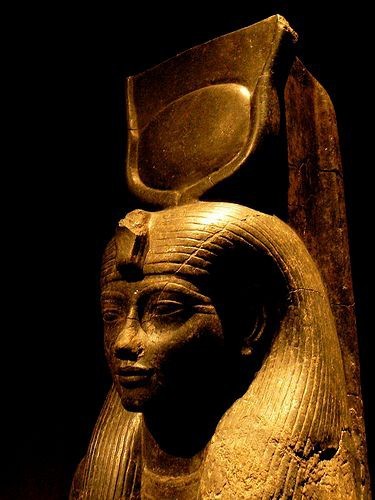
Hera and Juno might resonate with you but I think Frigg and Hathor might resonate more. Hathor has strong Venusian qualities and is also associated with the evening star. Your ketu in P. Phalguni in the 4th house, as well as Venus atmakaraka in Purva Ashadha make you a very pleasure-loving person, also pretty private about it. Frigg also is a goddess of love but her silence and silent knowing is a big charachteristic that sets her apart, that makes her Ketu like in a sense, in my opinion(Pisces, U. Bhadra's sign, does have associations with Ketu) and might resonate with your Mula sun. Frigg and Hathor are also both giddesses of the sky. Uttara Bhadrapada is the stage of your primal(sexual) energy gaining wings and ascending, symbolised by the winged serpent.
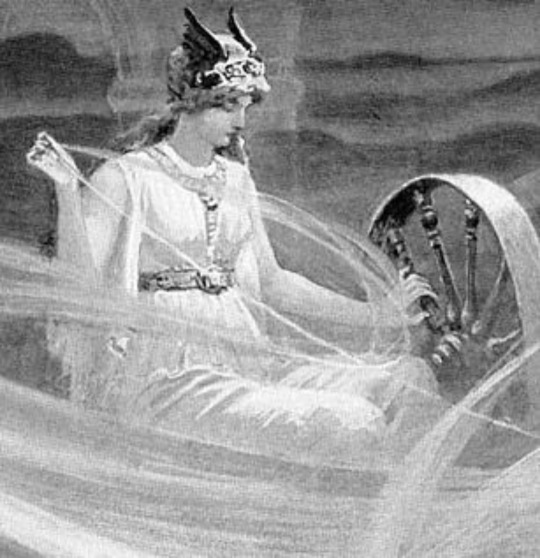
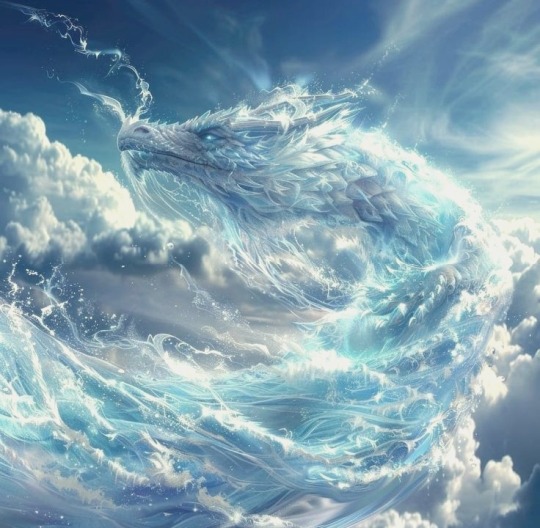
If you want to find more goddesses with similar characteristics, look into sky, marriage, love goddesses with a queenly status.
Uttara Bhadrapada and Mula are both about the core/raw truth and the purity of it. They are the final stages of the two most passive planets(Saturn and Ketu) and both relate to mastery of the self. Krittika nakshatra, your ascendant, is the purification in order to achieve precision. It's also related to purity. All in all your energy is internally(or maybe sometimes externally too) fierce and determined, relentless and resilient, even though outwardly that strength might manifest as calm and tranquility. There is a strong urge to not settle and to get the core truth of anything and to maintain that state by any means possible.
Egyptian Ma'at is the goddess of truth related to Mula. She's the goddess who weighs deceased people's hearts against a feather to determine whether or not they're pure enough. The devourer_ Ammit is on her side, also sometimes recognized as a goddess, ready to consume the unworthy.

I have to mention the archetype of Hestia as well. She is the goddess that Cronos first devoured, the eldest child of the titan with Rhea. She respresents the burning fire of the hearth. Roman Vesta is her equivalent and in my opinion, Celtic Brigid belongs to their archetype too. Brigid is the smith, the poet, the nurturer, associated with fire and healing.
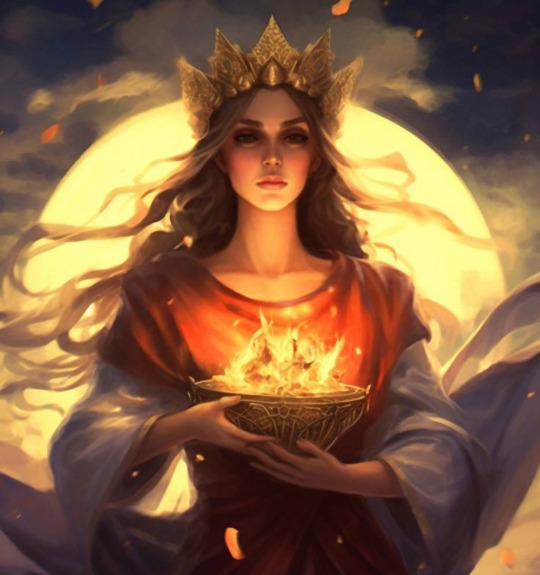
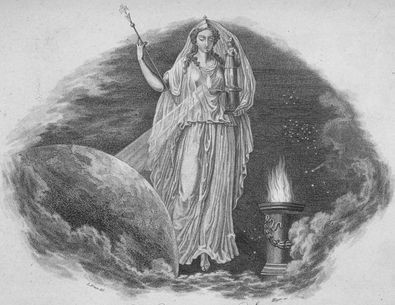
In a way, all three goddess archetypes of your big three nakshatras have a theme of purity, despite being different overall.
I also have to speak about the indicators of a fierce and discrimnatory nature in your chart. The Scorpio placements, including Mars in Jyeshta, Venus atmakaraka in Purva Ahadha and Ketu in Purva Phalguni_ these are the indicators of force and passion being what help you reach the state of truth and purity. So, fire and hearth goddesses seemed only right.
So, this is the description I could conjure with the chart😭 I hope it's helpful and interesting. As I said, this is not meant to make you connect with every single one of these, so apply your discernment and critical thinking here.
Please send a feedback💕 and have a nice day.
#vedic astrology#astrology#uttara bhadrapada nakshatra#uttara bhadrapada#nakshatras#astrology observations#sidereal astrology#astro notes#astrology tumblr#vedic astrology observations#aesthetic#goddesses#frigg#frigga#norse deities#norse mythology#hathor#hera#juno#hestia#brigid#vesta#ma'at#ask
30 notes
·
View notes
Text
☋☋ ☋ मघा Magha Nakshatra मघा ☋ ☋☋
Past lives, ominous, traveling inward
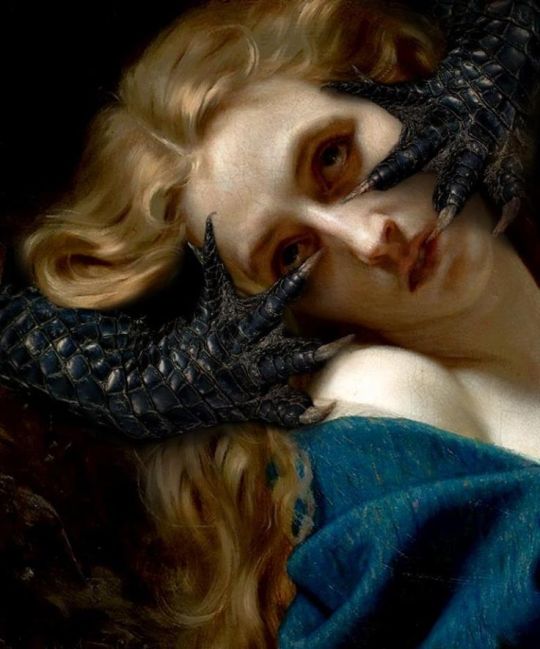
Hughes Merle's Mary Magdalene in the Cave, 1868. The reptilian arms are not part of the original painting.
The Basics Ruling planet: Ketu Ruling deity: Pitris Yoni: Male rat Symbol: Royal throne
Rahu and Ketu We can't talk about Ketu without talking about Rahu as well. Rahu and Ketu are referred to as the lunar nodes in astrology. They aren't physical objects in space like Jupiter or Saturn. They are calculated points. However, for ease of communication, Rahu and Ketu are often referred to as planets anyways.
The lunar nodes are determined by the orbits of the sun and the moon. The intersections of the orbits of the sun and moon as apparent from Earth tell us the position of the nodes at a given time. It takes about 18 months for the nodes to journey through a single zodiac sign and about two decades for them to cycle through all twelve.

Image from Wikipedia.
Since the nodes are located where the sun and moon overlap as seen from Earth, they are associated with eclipses. Rahu (the north, or ascending node) swallows the sun during a solar eclipse and Ketu (the south, or descending node) swallows the moon during a lunar eclipse. We can further assume that the nodes are always exactly 180° apart, or opposite to, one another. If the north node is in Sagittarius, for example, the south node will always be in Gemini.
The nodes in astrology deal with karmic destiny. The nature of your south node placement shows who you were in a past life, what you have previously mastered and now know in your bones to be true. Your north node placement shows what you are working towards in this life, what you strive to accomplish, the lessons you are here to master.
Rahu and Ketu In Mythology According to Vedic mythology, Rahu and Ketu started out as one being, a demonic serpent called a rakshasa. They were separated into two beings as punishment. During a ceremony to honor the planets, Lord Visnu churned up the oceans to create a divine nectar for them to drink and become immortal. When the planets (or deities) lined up to drink, the demon snuck under Visnu's nose to drink some of the nectar for himself. Rahu/Ketu had already ingested the immortal drink before they were caught in the act - becoming accidentally undying. Furious, Visnu beheaded the demon but at that point it was too late. Rahu (the demon's head) and Ketu (the body) become two entities and were cast to opposite ends of the sky.
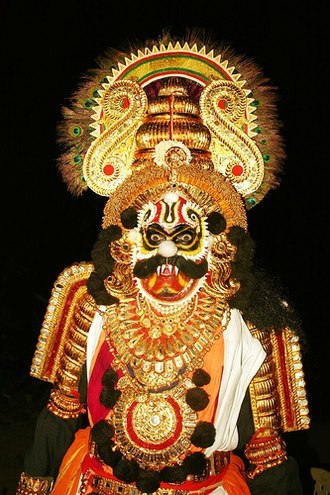
A depiction of a rakshasa (demon) done in Yakshagana, a traditional style of theater prominent in southern India. Image from Wikipedia.
Rahu, being the head, is arguably more responsible for the separation of the demon into two parts. As the head, Rahu is consumptive by nature. This is why one's natal Rahu placement indicates what they are after in this life. The devouring head symbolizes our insatiable desire to obtain more and become more.
Rahu's willingness to ignore boundaries to obtain the immortal nectar is telling - he has no regard for authority. He is not much of a leader himself, more so interested in mocking those holding positions of power. In this way Rahu is hypocritical because he attacks the character and methodologies of those in power yet he himself demonstrates childishness and irreverence. When he is rendered a head without a body, he is left an eternal troublemaker.
When separated from his head, bodily Ketu is doomed to forever long for his other half - reminiscent of the past being the past, something we can never go back to and simultaneously can't shake the memory of. We master our Rahu and Ketu by connecting our heads with our bodies - that is, by balancing past with future, applying ancient knowledge stored in the body to achieve future-facing objectives the head seeks to fulfill.
"Ketu's permanent longing for wholeness is a consequence of Rahu's excited refusal to respect conventional boundaries. As a result of Rahu's wildness, Ketu the Dragon-Tail Cauda Draconis is forced to gaze with eternally unsatisfied longing at His dear severed partner Rahu the Dragon-Head Caput Draconis." - Barbara Pijan Lama, Vedic astrologer based in Portland, Oregon

A makeup look done by smeyuka on Instagram. Note the grey/smokey tone of the face and red emphasis added to the eyes.
In Phaladeepika, a classical Sanskrit text on Vedic astrology, Ketu is described like this:
"Ketu is fiercly red-eyed, is venom-tongued (speaking venomously), and without a body or disembodied, he is violent (using weapons, wants to scare), and ignoble (low, fallen, no social contribution, uncultured, wild, intense), his complexion is smokey (ominous), he is a constant smoke drinker (using opium or marijuana), his body is covered in scars (not cooperative), not fatty (emaciated, thin, angular), and cruel (unforgiving)."**
** what is in paranthases are notes on different ways the text can be translated. Watch Vic Dicara's videos on Rahu and Ketu.

Artistic rendition of Ketu/Kathoo in E.A. Rodrigues's The Complete Hindoo Pantheon. Image taken from Wikipedia.
Some people think that what we experience as eclipses are actually Rahu and Ketu taking revenge for their separation. Eclipses are times of sudden change - when the sun is obscured by the moon or vice versa, the atmosphere on Earth is very different. Having witnessed the total lunar eclipse of 2017, I remember things turning a grey/yellow/brown hue, and the air taking on a kind of hazy quality (but I believe this was due to wildfires). If you have ever seen the movie Enemy with Jake Gyllenhaal, it looked like that.

Still from Enemy (2013)
Here is a description of a solar eclipse by Dr. Rick Feinberg, astronomer and science communicator (now retired):
"Measurements made at recent total eclipses put the illuminance at totality around 5 lux, comparable to civil twilight. The sky is still some shade of silvery, purply blue. In contrast, the black sky on a night of full Moon is 10 times darker still, less than 0.5 lux. Yes, bright planets –– especially Venus and Jupiter –– are obvious in twilight, but stars? I don’t like to waste valuable time during totality looking for stars; the only time I saw one was on August 21, 2017, when 1st-magnitude Regulus glimmered just to the left of the totally eclipsed Sun.
It certainly feels like it gets as dark as night during the final minute before totality, but that’s just because your eyes haven’t had time to adjust. The changes in illumination at the beginning and end of totality happen much faster and more dramatically than at dusk and dawn, respectively."
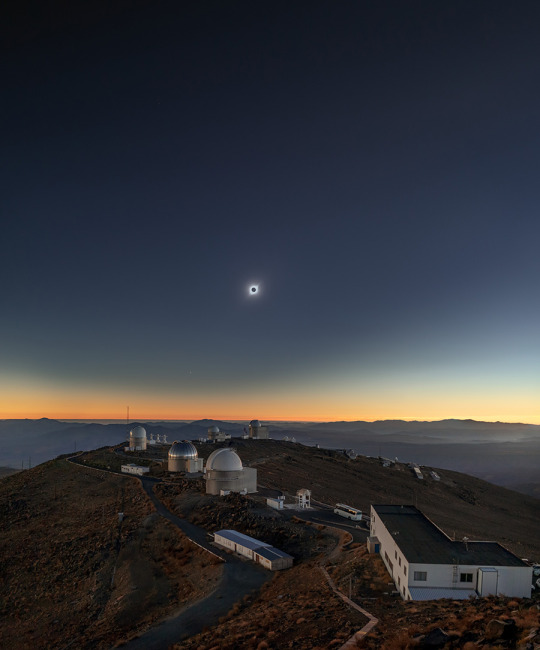
Image of the 2019 solar eclipse above the European Southern Observatory in Chile, taken by Mahdi Zamani.
Non-dualism and the Ouroboros The nodes are inseparable opposites, both two and one - like how the past and future becoming one in the present. In this way they demonstrate the concept of non-duality. Non-dualism is a philosophical concept observed in many spiritual and religious traditions, particularly ones that originated in the East such as Buddhism, Hinduism, and Taoism. The non-dual perspective holds that there is no fundamental separation - between objects, energy, people... it's all one.
“All things are permeated with God, just as all things are permeated with air.” – Hildegard of Bingen
Ketu's rulership over Magha suggests that people with heavy influence from this nakshatra in their birthchart are deeply spiritual and/or philosophical. If you think about Rahu and Ketu as being an axis - that is, talking about the same topics but having opposite opinions on them - Rahu expands outwards, forever seeking to consume and grow materially. Ketu expands internally. The expansion of Ketu looks like material poverty from the outside, but Ketu is not interested in earthly objectives. Rahu wants to grasp and Ketu wants to release. By releasing attachment to the physical, Ketu finds bliss.
Rahu's knowing is of the head. It is entirely cerebral. Ketu's knowing is bodily. That is, it is completely intuitive and feeling/sensory-based. In the world we live in, computational and logical thinking is (for better or worse) king. For this reason, if you have prominent Magha placements, I wouldn't be surprised if you feel like you either 1) don't belong in this world or 2) have been here before, perhaps many times over. Ketu, symbolizing past lives and knowledge gained from them, wanders the earth, aimless, forever drifting. He finds nothing on earth to be of substance.
While Ketu-heavy or Magha-heavy people can possess deep inner knowing that endows them with a certain type of respect, this same trait can be the source of an overly apathetic attitude when taken to an extreme. Detachment is all well and good, but unless you're truly the type to pursue a monastic or nomadic path, it's necessary to keep your feet on the ground at least a little bit to live in a well-rounded way. Ketu people are faced with a challenge to ground their intuitive knowledge and bring what they find on their travels inward out to the world around them.
One symbol that is steeped in unity and oneness is the ouroboros. Depicting a serpent or dragon devouring it's own tail, the ouroboros has appeared in ancient Egypt, Mexico, India, as well as Hermetic and Alchemical texts. The serpent chases its continually regenerating tail in an eternal circle, just as Rahu and Ketu are condemned to chase one another from opposite ends of the sky forever.
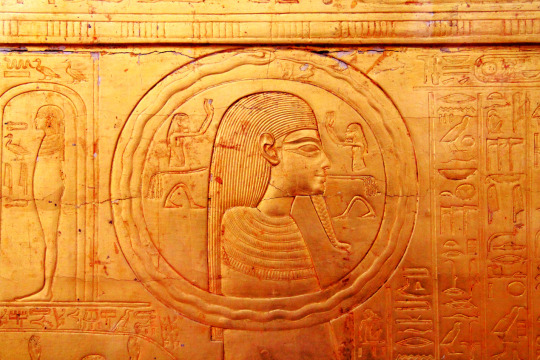

Two ouroboros symbols shown encircling a figure in An Enigmatic Book of the Underworld, funerary text and shrine discovered in King Tutankhamun's tomb. The figure has been speculated to be the mummified form of King Tut himself, while some think it is the unification of Ra and Osiris.
An Enigmatic Book of the Underworld is regarded as the place of the first appearance of the ouroboros, dating it to at least 14th century BCE. It is thought that the book illustrates the replenishing of the solar disc - the ancient Egyptians believed that the sun would use up all of it's heat and energy during the day and had to 'recharge' at night. At night, the Sun was said to pass through the same region of death where the gods were believed to reside. Their souls would follow the Sun as he cycled above and below the horizon while their bodies remained in the underworld. Time was seen as cyclical repetitions rather than a linear unfolding. The ancient Egyptian's understanding of time was based on their observations of recurring natural events like the Sun's daily journey across the sky and the annual flooding of the Nile.

An illustration of the ouroboros in an alchemical text from around 400AD.
The Alchemists believed that all physical materials on Earth originated from the same original source material and could be differentiated by their varying levels of purity. Gold was held as the most pure and 'perfect' form of matter, which is why the Alchemists sought to create it using lower quality metals such as lead - a process called chrysopoeia. The desire to create gold from crude materials that is central to Alchemy is largely metaphorical. The broader goal of the Alchemists was to evolve the human soul through deepening the understanding of one's self. The ultimate objective of alchemy was to transform personally into someone 'greater' than you were before. More knowledgeable, powerful, physically healthy or beautiful...
The Pitris The deities ruling Magha are the Pitris, spirits of the paternal ancestors of humanity - the word 'pitris' is Sanskrit for "fathers."
The word Magha can mean gift or it can mean power. As it relates to Magha nakshatra, it means gifted power - that is, inherited power. Each nakshatra has it's own associated sutra, which are kind of like condensed teachings. The translated sutra for Magha is "The forefather's gift of power needs demoralization, to ruin."
Vic Dicara explains the lesson of Magha nakshatra as illustrated in it's sutra - how to be victorious without getting wounded. The sutra for Magha is saying that the way to defeat your enemies is to prevent the battle from happening in the first place. And how do you do that? By bullying them, basically. Magha natives have the power of the forefathers (Pitris) behind them, which they brandish and threaten their potential opponents with. Before a single punch has been thrown Magha puffs out his chest, letting his opponent know that he has friends on the other side backing him up - think Dr. Facilier from the Princess and the Frog.
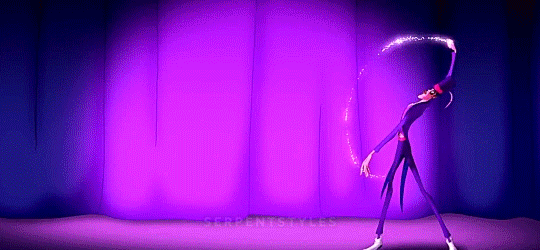
Magha's Yoni: the Male Rat The word "yoni" in Sanskrit refers to the vagina. The word can be used to refer literally to female genitalia, but it also has a deeper meaning relating to source material - the empty 'womb' out of which the universe materialized.
Each nakshatra has a corresponding yoni assigned to it. The yonis of the nakshatras describe their primal and sexual nature - how they behave when backed into a corner and the different ways they behave in the bedroom. In the vedic astrological system, the yonis are depicted as different types of animals - appropriate, considering the aspects of the human personality they attempt to describe and categorize.
Magha's yoni animal is a rat. Rats are inquisitive, playful and sociable by nature. They are intelligent and, as pets, trainable. They are hygienic, keeping themselves clean by grooming their tails, fur, and faces. They also do everything quickly - I've never seen a rat move in a leisurely way.
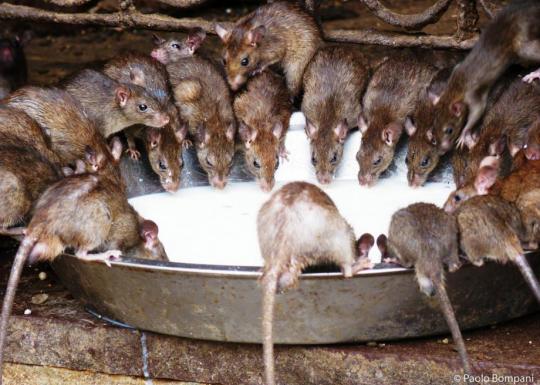
Rats are venerated at the Karni Mata temple in Deshnoke, India. Large saucers of milk are left out to keep them fed. The temple is a monument honoring the coexistence of life in every form - which is why rats are treated reverence here rather than seen as pests. Image by Paolo Bampani.
The rat signifying the primal nature of this nakshatra suggests a few things. We can easily surmise that Magha people are curious, likely quick-witted due to an above-average intelligence, and energetic. We can also guess that Magha people are adaptable - think about the poor conditions rats are able to survive in. An additional quality of rats which I think relates to Magha is their use of their whiskers to both balance themselves and maneuver around objects in their environment - they don't have the best eyesight and rely heavily on the sensitivity of their wire-y mustaches. This hearkens to Magha's bodily, ketuvian intelligence.
At first, the personality of the light-footed and friendly rat seems to clash with the ancient wisdom Magha has. When I think of someone in touch with their forefathers and past lives, I think of someone who moves slowly (literally and metaphorically), approaching and completing all tasks with patience, precision, and caution. The good-natured and hyperactive qualities of the rat combined with Magha's connection to protective (paternal) ancestors, dispersing and wandering ways of Ketu, and transforming power of the eclipse paints a particular personality profile. This is a person who has their head in the clouds and could rip you to shreds - if you provoke them first.
The Symbol of the Royal Throne Magha is considered to be an auspicious nakshatra - that is, it brings positive things to whatever planet is placed here. The rulership of the Pitris over Magha cements their innate power. It is one thing to be a powerful person because of the things you have accomplished, but when someone is powerful because of their ancestors has royalty in their blood. It can never, ever be taken from them because it is simply who they are.
Magha spans 0°00' to 13°20' Leo. Leo is the most regal and royal of all twelve zodiac signs. The most common gripe people have with Leo's is their pride and self-centered attitude. The thing is is that Leo is ruled by the Sun - the literal center of our solar system. Resenting a Leo for shining is like disliking the Sun for burning. Of course, egotism has the potential to run rampant if a Leo person has not matured very much, which is the shadow side of this sign. Oftentimes, though, you will find that the warm, glowing self-sureness of Leo's triggers the insecurities in those around them, causing them to lash out.
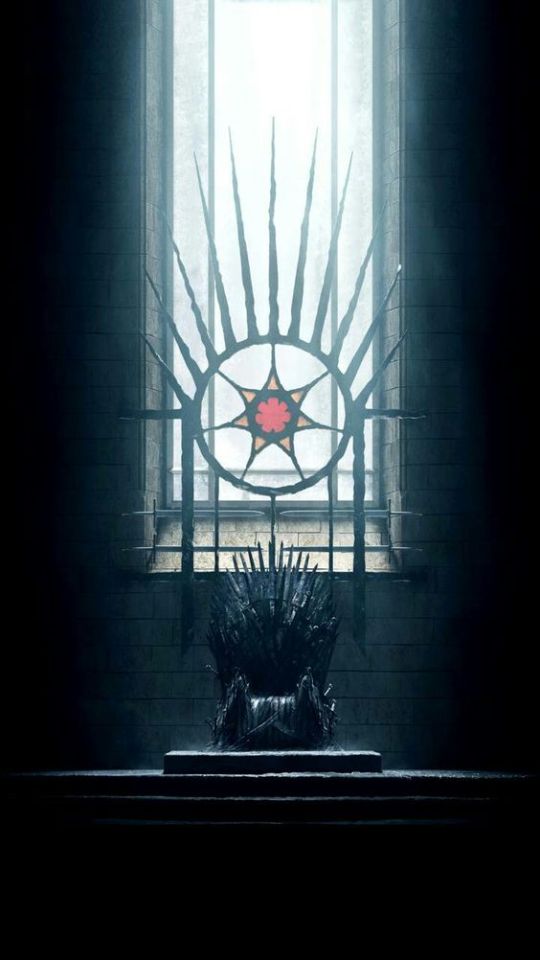
The Iron Throne from Game of Thrones.
The symbolism of the throne for Magha should come as no surprise. Those who sit and have sat in thrones throughout history were usually born into that role as opposed to being appointed - bringing us back to the ancestral power brought on by Magha's connection to the Pitris.
Song for Magha: You Don't Mess Around with Jim by Jim Croce And they say... You don't tug on Superman's cape You don't spit into the wind You don't pull the mask off that old Lone Ranger And you don't mess around with Jim
This song talks about a local legend who's reputation precedes him. It is known so well that you don't cross him that doing so would be as obviously foolish as spitting into the wind. While Jim, the menacing figure the song centers around, is described as being big and dumb - traits that aren't as applicable to Magha - his reputation as someone you don't want to mess with fits perfectly with the power of this nakshatra. Jim, just like Magha, has won the fight before it started because you're probably too intimidated to approach him in the first place. Maybe Jim had the Pitris backing him up, too.
-------
Check out Vic Dicara and Claire Nakti on YouTube - both influential figures in the vedic astrological community.
78 notes
·
View notes
Text
Rohini Moodboard
Rohini Sun
Rohini Moon
Rohini Ascendant
Arudha Lagna in Rohini
Rohini Stellium
Big Six in Rohini
Ascendant Lord in Rohini
Rohini Nakshatra in Atmakaraka/Rohini as Atmakaraka
Rohini in 1H/2H


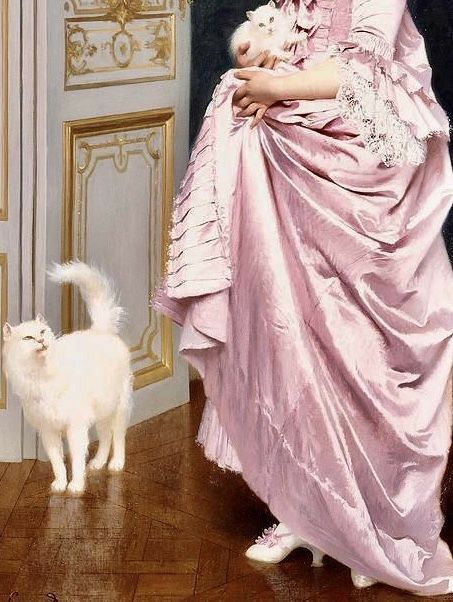
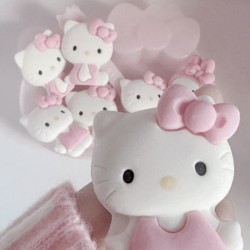


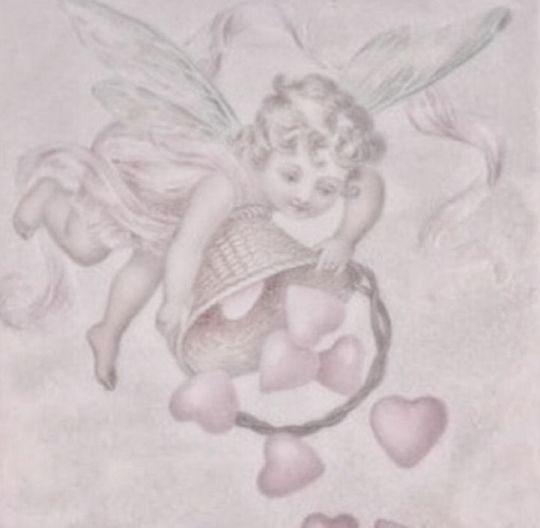


Rohini - The Red One
Themes - Creativity, Fertility, Beauty, Growth, Sensuality, Nourishment, and Abundance
Planetary Ruler: Moon
Personality: Rohini natives are very compassionate, sweet, and playful possessing a jovial personality. (Marilyn Monroe Rohini Sun) They're protective people who love and care about the ones that hold dearly in their lives. Rohini's attracts massive attention, big crowds, roaming eyes, and this leads to jealousy from peers, outsiders, or family members. Another thing about them is that they are very multi talented they can be good at numerous things like singing, dancing, writing, etc. (Jimin Rohini Moon) These people are the it-factor and that's on period, children love them to be around them, and are destined to be excellent parents in the future. This is not said a lot in vedic astro observations, but they can be amazing leaders as leadership roles naturally gravitate towards them including musical groups. (Bang Chan Rohini Ascendant) Also they have a way with words and are good with comebacks these natives are so damn creative and provoking too they enjoy getting a rise out of people especially to those they hate. One thing you don't want to do is piss them off you'll regret it cause once they go off it'll be a scary sight to see, so if you know what's best for you leave these cinnamon rolls. I did my own research and it's said they attract obsessive people, possessive partners, lustful individuals, cheaters, married ones, and even stalkers. They have a very long lasting impression on people. Rohini's are powerfully magnetic attracting people, opportunities, jealousy, awards, attention, clothing, wealth, animals, children, and almost everything. Dr. Pai mentioned how Rohini people love the color pink, along with flowers, and red too as they represent The Red One. The yoni animal of this nakshatra is the Serpent, When you look into their eyes you're immediately put into a trance. Natives of the Serpent Yoni can be hypnotic, magnetic, and snake-like. Once they inflict venom you're hooked for life. Snakes are gifted swimmers. They just have this natural ability to move the body in water. The most dominating feature of a snake is his ability to get the attention of anyone and everyone, there is fear, anxiety, and fascination associated with the serpent. These individuals fascinates people by their ability and attract attention with their eyes. Rohini natives usually have beautiful eyes, they may not be stunning to look but some how you will fall for their eyes once gazed upon.
More Traits: Attractive, charismatic, wealthy, popular, imaginative, well-educated, food-lover, responsible, sophisticated, nature-loving, romantic, seductive, stubborn, friendly, artistic, sensual, indulgent, strong-willed, helpful to loved ones, short tempered, and sexual.
Element: Earth
#rohini#rohini nakshatra#rohini sun#rohini moon#rohini ascendant#rohini in 1h#rohini in 2h#Ascendant Lord in Rohini#Rohini Nakshatra in Atmakaraka#Rohini as Atmakaraka#big six in rohini#Arudha Lagna#rohini stellium
135 notes
·
View notes
Text
Maa is the spirit’s cruelest addiction. She ties the Master of None/One up with blood-saturated serpents. She enfolds his breath in Her razor edges. The yoni eye of Ma'at shines through his citadel heart.
22 notes
·
View notes
Text
Ashlesha's symbol is a coiled snake. Representing the dormant Kundalini housed at the base of the spine.
When Kundalini awakens, she is pure unconditional love. But what happens before then?
The hypnotic, cat-like nature of Ashlesha is sensual and sexual. It gives someone an innate mastery over astral and sexual energy. This is why it can have the reputation for being manipulative and cold. I have noticed when I meet an Ashlesha dominant person they appear in my dreams.
When the Kundalini wakes up, she purges out all of your attachments, as seen in Purva Bhadrapada. While Purva Bhadrapada is the ability to manipulate with an awakened Shakti, totally removed emotionally, Ashlesha is the opposite. Ashlesha is housed in the comfort loving home of Cancer, and its yoni animal is the domestic cat.
It is also referred to as the "clinging star", and these people manipulate based on their attachments. Whether or not this ability beneficial only to them or to their loved ones is up to the individual horoscope. But the deities associated with this nakshatra are the decadent Naga serpents, with their love of jewels, gold, and fine sattvic food.
In pop culture, we can see this ability to draw things in using sexual energy in Ashlesha celebrities like Marilyn Monroe, Madonna, and Megan Fox. They often times get a demonized reputation for this, but this is the dark nature of Ashlesha. They are the ones who are most willing to undergo plastic surgeries and take up new personas, because of this cold Mercurial nature.
As a male example, Brian Jones from the Rolling Stones was not only a very technically proficient musician, but he also used this ability to draw an exuberant amount of lovers in.
Also, Jackson Galaxy, the My Cat From Hell guy has Ashlesha moon. And his whole career is based around being a "cat whisperer", and helping people to understand how to get their cats to behave. Again, very sensitive and skilled at manipulating energy, and with its yoni animal no less. He is a more positive example, I think.

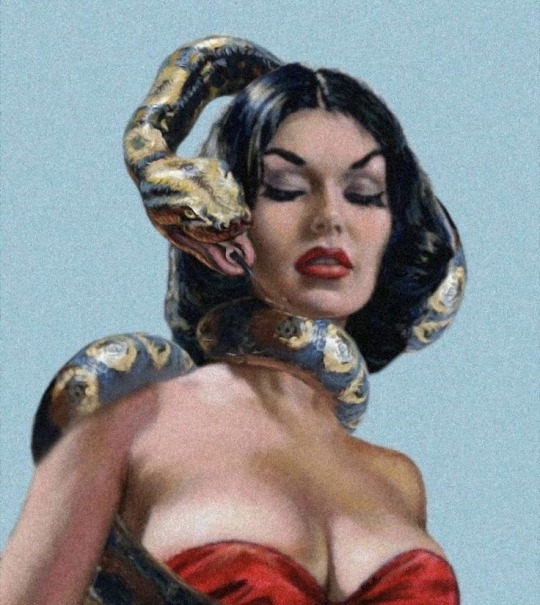


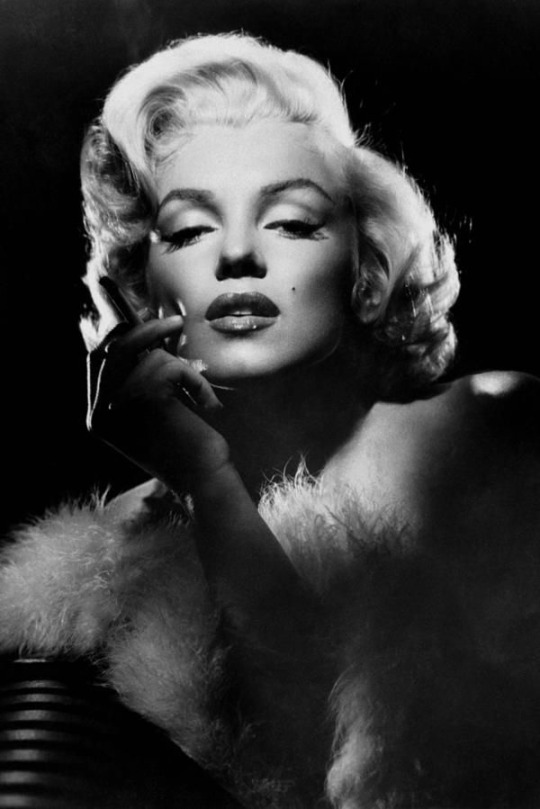
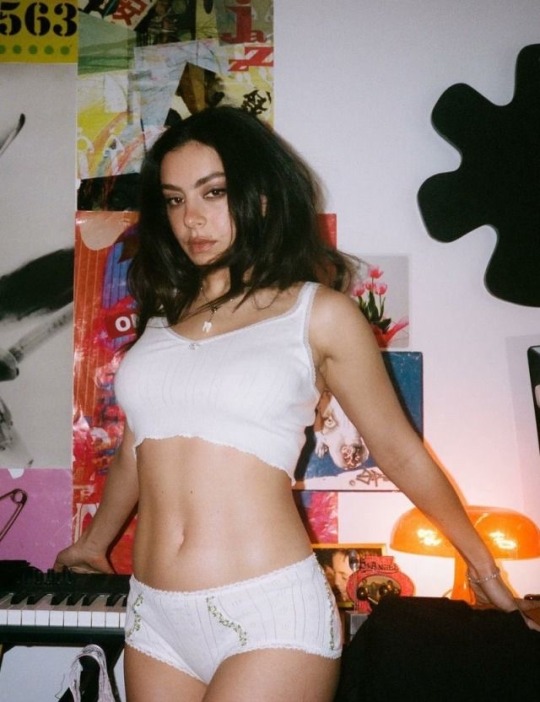


42 notes
·
View notes
Note
which yoni naks are best paired with other yoni naks? it can be friendship, business relations, love, etc. super curious!
sexually speaking (extending to love, friendship) animals that are amiable to each other have the better compatibility overall, and conversely the opposite. so what we classically see as a enemies(enemy yonis) like serpent x mongoose, cat and rat(cat is too frigid and finicky for oversexed leos), lion x elephant r low in compatibility. predators have less chemistry with the other yonis and “prey” x “prey” is higher and has more but same yoni naks r best paired. tbh for business relations, if u are in the public eye and you want some press go have some beef with your enemy nak lol. lion yoni and elephant yoni tend to not fw each other at first cause they r both tryin to have a big dick off
10 notes
·
View notes
Text

Kali and Ouroboros The Ouroboros is an ancient symbol depicting a serpent or dragon eating its own tail. The name originates from within Greek language; (oura) meaning "tail" and (boros) meaning "eating", thus "he who eats the tail".The Ouroboros represents the perpetual cyclic renewal of life and infinity, the concept of eternity and the eternal return, and represents the cycle of life, death and rebirth.
If we look into the Hindu Mythology we can see that when creation takes place there comes the unification of the male and female power. The Supreme divides itself into male and female in the form of LING (Penis) and YONI(Vagina) while creation. The upward aimed triangle Represents the Male Reproductive Organ and the the lower amied triangle represents the Female Reproductive Organ. Thus the unification of the two helps in creation of the whole cosmos. The Ling represent as Shiva and Yoni represents Shakti.
Again if we go deep into the mythology the creation is result of the unification of Time (Kaal) and Infinity (Kali)...The Ouroboros can also represent as the Kaal Chakra which keeps on going...Kaal i.e Shiva at one hand creates and in the end Destroys....Thus the cycle of time goes on...But who controls time cycle? Who creates Kaal (Time) when it ends? There comes in Kali...Energy who is beyond Kaal...who is illusion and infinity herself...the one who has no beginning and end...who controls the time cycle and the energy who keeps this infinite cycle go on...through the game of destruction and creation..as the concept of Ouroboros say "The end is the new Beginning" Fusion of Pattachitra and Madhubani
24 notes
·
View notes
Text
Mrigashira: Obsessive & Obsessed Over
TW: suicide, rape, death, murder, abuse
This is part 2 of my Mrigashira series. For part 1, go here.

Rachel McAdams, Mrigashira Moon
I want to explore the nature of Mrigashira in relation to the obsessiveness it inspires in others and often how obsessive it can be. Mrigashira's mythology is tied to escape, changing form and running away. As I discussed extensively in part 1, truth-telling is part of a Mrigashira native's purpose. They are simply built that way. This is also a key part of the reason why others tend to be so magnetically drawn to them and are often driven to the point of obsession for them.
Mrigashira possesses a serpent yoni and serpents are known to represent transformation and renewal. The Kundalini is represented by a coiled serpent. Serpents have always been associated with temptation, dangerous allure, truth unveiling and change. People are drawn to Mrigashira natives because unconsciously they want to embody the freedom and honesty of these Martian individuals but having so many people pulling at your energy means you lose the sense of self and feel corrupted by their influence, to maintain their purity most Mrigashira natives live very reclusive lives. And this is for their own safety and well-being as well, the more these natives allow themselves to be projected on to by others, the more hatred they receive because of the collective shadow that is put up against them. Imagine being in the presence of a serpent all the time? Its bound to make others uneasy and restless, no matter how friendly, how inviting or welcoming they seem, you may be attracted to them but you do not want to be around them constantly, its too unnerving.
Similarly serpents belong to their burrows (or wherever they live idk lmao) not out in the open among people. Not only because its a threat to their very existence (people see a snake, they try to kill it) but because they are wired and conditioned to thrive in a very different sort of environment.
The allure of the serpent is very attractive but its constant in your face existence is not. Same goes for the veil lifting, truth revealing nature of these natives. Honesty is rare and so appreciated but imagine the truth staring you in the face all day everyday, you would go mad. There is a reason why ignorance is considered bliss, its because you need that veil over reality to keep yourself sane, if you saw things and perceived them as they are, you would drive yourself to lunacy. Most people are not prepared to receive and understand that kind of truth, its only after a certain stage in your spiritual journey that you are initiated into it.
There is a reason why the third eye chakra is the second highest chakra in the hierarchy (root chakra at the bottom from which you ascend upwards all the way up to your crown chakra). The third eye chakra is sight which allows us to see things as they are. The crown chakra which is the final chakra is the ability to understand things as they are. To understand we must first have clarity of vision and to have that we must ascend above all the other chakras.
Mrigashira natives project the truth and because of this, they are torn apart by others often. These natives represent the shadow of the gazer. Serpents beckoning for change, asking you to shed your shadow, and your inhibitions and renew yourself. This can be very painful and scary, as shadow work is always very difficult to do but instead of understanding that what we hate in others is a reflection of our shadow, most people just hate the Messenger themselves.

Petra Kelly, Mrigashira Moon, Vishaka Ketu (the man photographed next to her is her husband)
She was a founding member of the German Green Party and was a prominent activist in the 1980s who united ecological concerns with disarmament, social justice, and human rights. She was one of the OG ecofeminists imo
On 19 October 1992, the decomposed bodies of Kelly and her partner, ex-general and Green politician Gert Bastian (born 1923), were discovered in the bedroom of her house in Bonn by police officials after they received a call from both Bastian's wife and Kelly's grandmother who reported that they had not heard from either Bastian or Kelly for a few weeks. The police determined that Kelly was shot dead while sleeping by Bastian, who then killed himself. She was 44, he was 69. The last time anyone heard from the couple was on 30 September 1992 when Kelly sent a parcel to her grandmother.
Obviously, no one knows what transpired between the two or what might have led to this tragic end but being killed by your partner is unfortunately a pattern in the lives of many Mrigashira natives.
Obviously, not every Mrigashira will experience this so please do not worry or hyperventilate!!!!
One's spouse is a reflection of our subconscious, we are driven to the point of madness and murder when they project the truth of our subconscious back to us. We see the darkness, we see the ugliness and we feel violated. Obviously this is just one explanation and there could be numerous others.
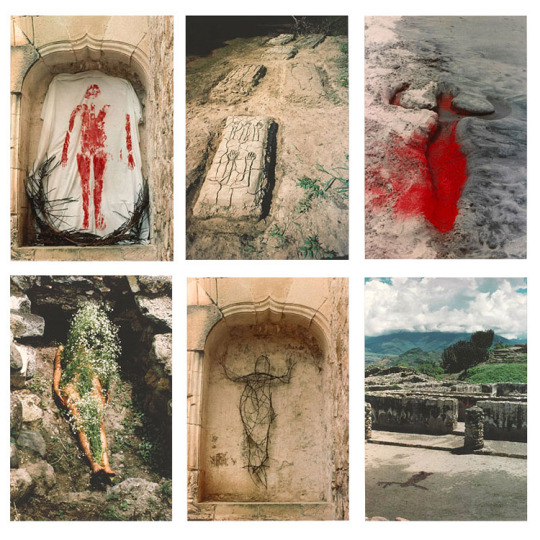
The iconic ecofeminist artist Ana Mendieta was Vishaka Sun, Mrigashira Moon
Ana Mendieta died on September 8, 1985, in New York City, after falling from her 34th-floor apartment in Greenwich Village at 300 Mercer Street. She lived there with her husband of eight months, minimalist sculptor Carl Andre. The circumstances surrounding her death have been the subject of controversy. She fell 33 stories onto the roof of a deli. Just before her death, neighbours heard the couple arguing violently. The neighbours heard Mendieta scream out "no" right before her death, and Andre had scratches all over his face. There were no eyewitnesses to the events that led up to Mendieta's death. A recording of Andre's 911 call showed him saying: "My wife is an artist, and I'm an artist, and we had a quarrel about the fact that I was more, eh, exposed to the public than she was. And she went to the bedroom, and I went after her, and she went out the window." During three years of legal proceedings, Andre's lawyer described Mendieta's death as a possible accident or a suicide. After a nonjury trial, Andre was acquitted of second-degree murder in February 1988.
There are many parallels between Petra & Ana's lives. From the fact that both of them were Mrigashira Moon to the fact that both their husbands worked in the same field as them and that both of them were ecofeminists.
From what we know about the circumstances surrounding Ana's death, it's pretty clear that Carl did it and even reading about what he said on his 911 call is so??? like that sounds like some classic gaslighting and I'm inclined to believe it was probably over his jealousy of how she was a better artist than him. Petra's story we may never know but its not a stretch to think that something similar may have happened between her and that oldie.
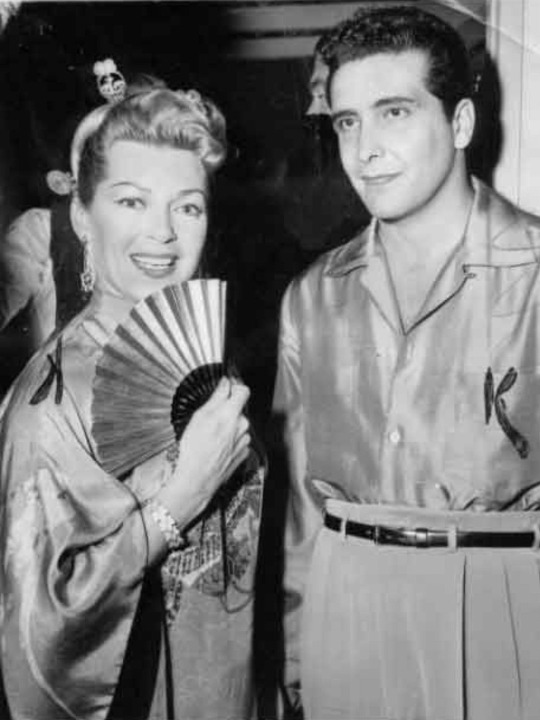
Lana Turner, Mrigashira Rising
In 1957, while Turner was filming a movie, she had begun receiving phone calls and flowers on the set from mobster Johnny Stompanato (pictured with her above).
He pursued Turner aggressively, sending her various gifts. Turner was "thoroughly intrigued" and began casually dating him. After a friend informed her of who Stompanato actually was, she confronted him and tried to break off the affair. Stompanato was not easily deterred, and over the course of the following year, they carried on a relationship filled with violent arguments, physical abuse and repeated reconciliations. Turner would also claim that on one occasion he drugged her and took nude photographs of her while unconscious, potentially to use as blackmail.
I don't know if I have posted about it before but being violated or having your sexual intimacy exposed?? is also a Mrigashira theme. Ex: Jennifer Lawrence, Mrig Moon whose private pictures leaked in 2014, Pamela Anderson, Mrig Rising whose sex tape leaked in the 90s.
In 1957, Stompanato visited Turner on set in London and when she asked him to leave, he threatened her with a gun.
On the evening of March 26, 1958, Turner attended the Oscars. Stompanato, angered that he did not attend with her, awaited her return home that evening, whereupon he physically assaulted her. Around 8:00 p.m. on Friday, April 4, Stompanato arrived at Turner's rented home at 730 North Bedford Drive in Beverly Hills. The two began arguing heatedly in the bedroom, during which Stompanato threatened to kill Turner, her daughter Cheryl and her mother. Fearing that her mother's life was in danger, Cheryl – who had been watching television in an adjacent room – grabbed a kitchen knife and ran to Turner's defence. Stompanato died from stab wounds to his stomach.
This whole episode is very Mrigashira coded but thankfully Lana Turner survived and her abuser died.
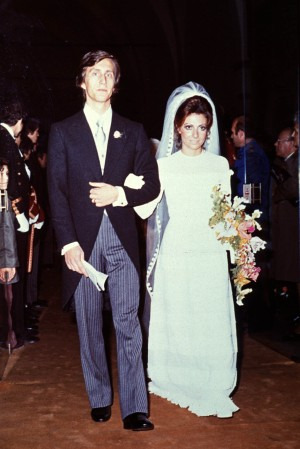
Maurizio Gucci- Mrigashira Moon, Punarvasu Rising
If you've watched House of Gucci, you already know how this unfolds.
On 27 March 1995, Gucci was shot by a hired hitman on the steps outside his office as he arrived at work. His former wife Patrizia Reggiani was convicted in 1998 of arranging the killing. According to prosecutors, Reggiani's motives were a mixture of jealousy, money, and resentment towards her former husband. She served 18 years in prison and was released in October 2016.
I do believe all these people were murdered/attacked because of the resentment and envy their partners felt towards them even though due to the tragic circumstances there is very little proof of it.

Pamela Anderson, Mrigashira Rising
The Baywatch star married drummer Tommy Lee in 1995, after knowing him for just four days. Their stormy marriage lasted just 3 years, and in that time the Mötley Crüe member served 4 months in jail for domestic abuse against Anderson. It’s reported that during this incident Lee kicked Pamela while she was holding their son Dylan. But even though Anderson had helped to convict Lee, she was waiting for him when he came out and the pair briefly reconciled. Now, though, they’ve gone their separate ways.
A spiritual reason behind why people abuse others is like I said before on this post, they see their shadow reflected in you. The most powerful life saving thing you can do for yourself in these instances when a relationship (does not have to be romantic) takes a sour and dangerous turn is to LEAVE immediately. The longer you stay, the more you forgive/ignore them and overlook their tendencies, the darker the shadow grows because you are letting yourself submit to it. You have to understand that certain things cannot be talked through or come to an understanding about, like how a snake sizes you up before swallowing you whole, the initial triggers are proof of what their darkness is pulling them towards. When you dont recognise that as a sign and take your leave, they are even more agonised and disturbed because now they see all their ugliness reflected in you, how cruel and uncaring they are, everytime they look at you, they see you project their worst traits back to them. Have you noticed how men are always 100x more cruel to the woman who is extremely kind to him and puts up with him? He is not moved by her kindness to treat her better, he treats her worse because she reminds him of how much of a piece of shit he is, he sees his own failures as a human being reflected in her. A woman who does not put up with shit and leaves and cuts them off is also severing these spiritual ties which in a sense "liberates" the man from his shadow. This is why its so important to know your worth. You risk your own life by not knowing it. This is also the reason why men keep chasing the women who dont put up with shit, because theyre not projecting their shadow back to them.

Brooke Shields, Mrigashira Moon & Venus
Brooke was obsessed over by absolutely everyone in her youth. They sexualized a goddamn child and made money from it. Here's a very uncomfortable clip of Susan Sarandon talking about 11yr old Brooke.
I don't want to elaborate too much because it makes me uncomfortable af but read about Brooke's life and you'll see how Mrigashira's many themes unfolded in her life (toxic mom included)

Dante Alighieri, Mrigashira stellium (Sun, Mercury & Rising)
Now that we've discussed how obsession with Mrigashira women ends in tragedy, lets see how Mrigashira natives themselves can be very obsessive in love.
Dante first met Beatrice, who he has described as the love of his life when they were children. She died at 24yrs old and Dante & her were never married nor did they ever even have a conversation but Dante was passionately, madly obsessed with her. He wrote about her A LOT. (imagine writing a shit ton of poetry and prose about a woman you've never even talked to?? haha 👁️👄👁️)
They met twice in their life, he married another woman yet he wrote about Beatrice continuously and exalted her to the high heavens
Dante and Beatrice never even kissed. For Dante, though, it didn’t matter that his love for Beatrice remained unconsummated. Why? Because merely the act of loving her was enough. Loving someone was its own justification.
How could this be? It connects to how Dante’s understanding of his love for Beatrice evolved. By the end of Vita nuova, Dante has come to understand that his youthful love was superficial. Instead, he realizes that his love for her is his most direct experience of the divine nature of love. Beatrice, after all, was “sent from Heaven,” a gift from god. By loving her — even if it’s from afar — Dante is himself purified, brought to a new spiritual existence, and brought closer to god. This is one reason why the work is titled Vita nuova: Dante’s love of Beatrice grants him a new life.

Franz Kafka- Mrigashira Stellium (Moon, Mercury and Venus)
Kafka's Letters to Milena are very popular but what's even crazier is their relationship.
Milena was a translator. In 1919 she discovered a short story (The Stoker) by Prague writer Franz Kafka, and wrote to him to ask for permission to translate it from German to Czech. The letter launched an intense and increasingly passionate correspondence. Milena and Kafka met twice: they spent four days in Vienna together and later a day in Gmünd. Eventually, Kafka broke off the relationship, partly because Milena as unable to leave her husband, and their almost daily communication ceased abruptly in November 1920. They meant so much to each other, however, that they did exchange a few more letters in 1922 and 1923 (and Kafka turned over to Milena his diaries at the end of his life). Kafka died in 1924.
Mrigashira men 🤝passionate love affair with a women they've met twice
“You are the knife I turn inside myself; that is love. That, my dear, is love.” ― Franz Kafka, Letters to Milena
“Dear Milena, I wish the world were ending tomorrow. Then I could take the next train, arrive at your doorstep in Vienna, and say: ��Come with me, Milena. We are going to love each other without scruples or fear or restraint. Because the world is ending tomorrow.” Perhaps we don’t love unreasonably because we think we have time or have to reckon with time. But what if we don't have time? Or what if time, as we know it, is irrelevant? Ah, if only the world were ending tomorrow. We could help each other very much.” ― Franz Kafka, Letters to Milena
(brb im ugly cryinggg 😭😩😭kafka was such a loverboy)
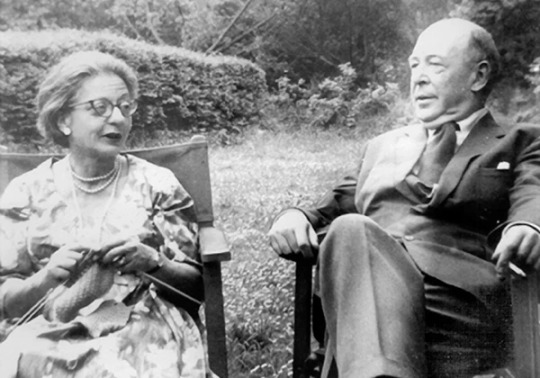
C.S Lewis, Mrigashira Moon
Joy was a feisty Jewish divorced single mother from the Bronx. Lewis, 17 years her senior, was a lifelong confirmed bachelor (he wrote The Chronicles of Narnia) . They exchanged vows at her hospital bedside after a devastating diagnosis of metastasized breast cancer. Joy spent her final days dying in the arms of her most unlikely husband.
Joy had bone cancer and wasn’t expected to live; miraculously, they had three years together before she finally succumbed to cancer at age 45.
The loss devastated C.S. Lewis (as one can tell by reading A Grief Observed, one of his most heart-wrenching, personal books). Perhaps the biggest lesson one can take away from the love between C.S. Lewis and Joy Davidman was their willingness to love each other, however risky, however unsafe it may be. Lewis expressed grief, shock, and dismay over his wife’s death, but he never expressed regret over marrying her, never wished that he had taken the “safe” way.
Lewis summed this up beautifully in his poem, As the Ruin Falls:
"All this is flashy rhetoric about loving you.
I never had a selfless thought since I was born.
I am mercenary and self-seeking through and through:
I want God, you, all friends, merely to serve my turn.
Peace, re-assurance, pleasure, are the goals I seek,
I cannot crawl one inch outside my proper skin:
I talk of love --a scholar's parrot may talk Greek--
But, self-imprisoned, always end where I begin.
Only that now you have taught me (but how late) my lack.
I see the chasm.
And everything you are was making
My heart into a bridge by which I might get back
From exile, and grow man.
And now the bridge is breaking.
For this I bless you as the ruin falls.
The pains You give me are more precious than all other gains."
They were together for 3 years during which she was very sick and bedridden, yet his love for her is soo profound and he wrote extensively about how much her death devastated him :((
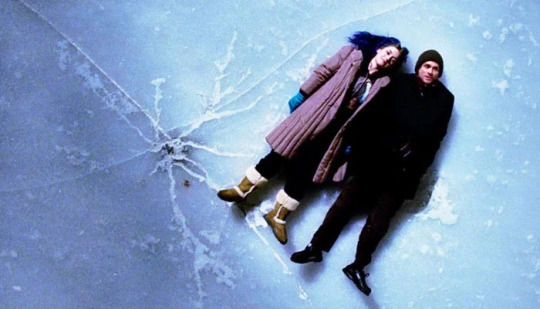
Jim Carrey, Mrigashira Moon starred in Eternal Sunshine of the Spotless Mind (directed by Michel Gondry, Punarvasu Rising) and this movie is an ode to the eternal nature of love. Two individuals whose memories are altered repeatedly to rid them of one another keep meeting each other again and again. Its such a beautiful story of how undying love is.
I think Punarvasu & Mrigashira natives are connected to each other in some way.

In this interview, Stephen Colbert (Mrigashira Moon) asks Keanu Reeves (Punarvasu Moon) "What happens when we die?" to which Keanu responds "I know that the people who love us, will miss us". Its a very earnest answer more so considering how both Stephen and Keanu have lost so many people in their lives. Keanu's ex gf died in a car accident a year after they had a stillborn daughter. Colbert lost his father and 2 brothers to a plane crash when he was 10.

In Sia's (Mrigashira Moon) MV for Elastic Heart, Maddie Ziegler (Punarvasu Moon) and Shia LaBeouf (Mrigashira Sun) are depicted as Sia's two selves who are warring with each other inside a cage, in the end Maddie makes it out of the cage while Shia is stuck inside. Sia said she wrote this song about a failing relationship so the MV can be understood as a symbolic representation of two sides of Sia battling whether to leave or stay in this relationship. Its particularly poignant to me that the person who makes it out alive is a Punarvasu native.
Its also quite well known how creepily obsessed Sia has been with Maddie over the years.

Hugh Dancy (Mrigashira Sun) played Will on Hannibal where the titular character was played by Mads Mikkelsen (Vishaka Moon)
The two share an intense toxic violent emotional relationship. He tries to kill him but he also saves him.
I think Mars-Jupiter relationships are often this way, intense and ultimately doomed because the two can never stay together.

Eminem, Saturn in Mrigashira atmakaraka (Chitra Sun, Dhanishta Moon) allegedly had a relationship with Mariah Carey (Punarvasu Moon) in the 2000s and repeatedly referenced her in his songs whilst she stayed quiet about him and often denied their relationship.
In 2002 Eminem rapped in his song Superman "What you trying be? My new wife? / What, you Mariah? Fly through twice.” On When the Music Stop, he said, “What the f–k you take me for, a joke? You smoking crack? ‘Fore I do that, I’d beg Mariah to take me back.”
In the same year, Mariah released a song called Clown in which she sang, “You should’ve never intimated we were lovers when you know very well we never even touched each other.”
She explained, “I talked to him, I spoke to him a few times, whatever,” she said at the time. “But in terms of me having an intimate relationship? With men, I can name them all on one hand, and he’s not one of them. I hung out with him, I spoke to him on the phone. I think I was probably with him a total of four times. And I don’t consider that dating somebody.”
Eminem went on talking about her obsessively for yeaaarsss (that's the Mrigashira in him/all his Mars energy in general, Martians are a whole new brand of obsessed)
In 2009, Eminem rapped in Bagpipes from Baghdad
“Mariah, whatever happened to us? Why did we have to break up?Nick Cannon, you pr–k, I wish you luck with the f–kin’ whore.”
Mind you that he himself admitted that they only dated for 6 months in 2002, 7 WHOLE YEARS LATER he is still singing about her, he's clearly still obsessed with her but he's also an asshole for speaking about her in such disparaging terms.
And that's when Mariah Carey dropped her iconic song Obsessed
in 2019, 17 years later, Eminem was still rapping about her lol
"I know me and Mariah didn’t end on a high note / But that other dude’s whipped — that p—y got him neutered, tried to tell him this chick’s a nut job before he got his jewels clipped / Almost got my caboose kicked / Fool, quit / You not gonna do s–t / I let her chop my balls off too before I lose to you, Nick.”
Sorry for spilling all the tea but I just think its soooo funny. Its no Dante & Beatrice but oh man lol
Through this example we see a negative toxic manifestation of Mrigashira's obsession and devotion to a partner.

Prince William, Mrigashira Sun and Princess Catherine, Punarvasu Moon are another Mrig-Punarvasu/Jupiter pairing I can think of
As we have seen from Eminem, Mrigashira men can often be violent and abusive
Johnny Depp-Mrigashira Sun, Kanye West- Mrigashira Sun, Salman Rushdie Mrigashira Sun & Moon, Shia LaBeouf- Mrigashira Sun have all been accused of abuse by their partners.
Obsession isn't a good thing and very few Mrigashira men are like Dante in today's world.
I hope this was interesting & informative.xx
#astrology observations#astrology notes#sidereal astrology#nakshatras#astrology#vedic astro notes#astro notes#vedic astrology#astro observations#astroblr#mrigashira#mars#jupiter
314 notes
·
View notes
Text
Exploring Nakshatra Symbols & Their Profound Significance
In the vast tapestry of Vedic astrology, Nakshatras, or lunar mansions, stand as celestial markers guiding individuals through the cosmic journey of life. Each Nakshatra embodies its unique energy, character, and symbolism, shaping the destiny and personality of those born under its influence. Understanding Nakshatra symbols and their significance unveils profound insights into human existence and cosmic harmony.
Unveiling the Nakshatras
Nakshatras are the 27 divisions of the ecliptic, each approximately 13.20 degrees wide, demarcated by the apparent path of the Moon. Rooted in ancient Indian astronomy and astrology, Nakshatras hold immense significance in charting horoscopes, predicting events, and understanding individual traits.
Symbolism Infused with Meaning
Every Nakshatra is associated with a particular symbol, embodying its essence and attributes. These symbols range from animals and deities to objects and natural elements, each carrying profound metaphysical significance:
1. Ashwini Nakshatra (The Horse Head): Symbolizing swiftness, vitality, and the pursuit of new beginnings, the horse head of Ashwini represents the energy of initiation and rapid advancement.
2. Bharani Nakshatra (The Yoni): Representing the cosmic womb of creation and the power of birth and transformation, the Yoni symbolizes fertility, nurturing, and the cycle of life and death.
3. Krittika Nakshatra (The Razor or Flame): Reflecting the sharpness of intellect, purification, and the transformative power of fire, the Razor or Flame embodies the cutting edge of discernment and the relentless pursuit of truth.
4. Rohini Nakshatra (The Chariot): Symbolizing beauty, creativity, and sensual allure, the Chariot represents the journey of the soul through the material realm, guided by the principles of aesthetics and harmony.
5. Mrigashira Nakshatra (The Deer Head): Evoking themes of gentleness, grace, and sensitivity, the Deer Head symbolizes the quest for inner peace, spiritual awakening, and the pursuit of higher truths.
6. Ardra Nakshatra (The Teardrop): Signifying the power of transformation through suffering and purification, the Teardrop represents the cosmic tears shed in the process of evolution and the cleansing of karmic bonds.
7. Punarvasu Nakshatra (The Quiver of Arrows): Reflecting the duality of existence and the quest for balance and equilibrium, the Quiver of Arrows symbolizes the dynamic interplay of forces and the pursuit of enlightenment.
8. Pushya Nakshatra (The Cow’s Udder): Representing nourishment, abundance, and sustenance, the Cow’s Udder embodies the divine motherly energy that nurtures and supports all life forms.
9. Ashlesha Nakshatra (The Coiled Serpent): Symbolizing primal instincts, kundalini energy, and the mysteries of the subconscious mind, the Coiled Serpent represents the latent power within each individual waiting to be awakened.
10. Magha Nakshatra (The Throne): Reflecting the regal essence of leadership, authority, and ancestral legacy, the Throne symbolizes the divine right to rule and the responsibilities inherent in wielding power.
11. Purva Phalguni Nakshatra (The Front Legs of a Bed): Signifying romance, passion, and the pursuit of pleasure, the Front Legs of a Bed represent the sacred union of masculine and feminine energies in the dance of creation.
12. Uttara Phalguni Nakshatra (The Back Legs of a Bed): Reflecting the principles of support, stability, and endurance, the Back Legs of a Bed symbolize the foundation upon which relationships and societies are built.
13. Hasta Nakshatra (The Hand): Symbolizing skill, craftsmanship, and dexterity, the Hand represents the creative power of human ingenuity and the ability to manifest dreams into reality.
14. Chitra Nakshatra (The Pearl or Bright Jewel): Reflecting the beauty of artistic expression and the transformative power of imagination, the Pearl or Bright Jewel embodies the divine spark of creativity that illuminates the world.
15. Swati Nakshatra (The Shoot of Plant):Signifying growth, expansion, and the pursuit of freedom, the Shoot of Plant represents the innate drive within every individual to break free from limitations and reach for the stars.
16. Vishakha Nakshatra (The Archway): Symbolizing the gateway to higher consciousness and the pursuit of spiritual enlightenment, the Archway represents the path of initiation and the journey of the soul towards divine union.
17.Anuradha Nakshatra (The Lotus): Reflecting purity, devotion, and spiritual aspiration, the Lotus symbolizes the journey of the soul through the muddy waters of material existence towards the blossoming of inner wisdom and enlightenment.
18. Jyeshtha Nakshatra (The Umbrella): Signifying protection, authority, and the pursuit of social justice, the Umbrella represents the divine mandate to uphold righteousness and defend the weak and vulnerable.
19. Mula Nakshatra (The Roots): Symbolizing the primal forces of creation and destruction, the Roots represent the foundation upon which the tree of life grows and the transformative power of regeneration and renewal.
20. Purva Ashadha Nakshatra (The Front Part of a Horse):Reflecting the spirit of adventure, exploration, and conquest, the Front Part of a Horse symbolizes the relentless pursuit of goals and the quest for ultimate fulfillment.
21. Uttara Ashadha Nakshatra (The Back Part of a Horse): Signifying endurance, perseverance, and the indomitable spirit, the Back Part of a Horse represents the journey of the soul through trials and tribulations towards victory and triumph.
22. Shravana Nakshatra (The Ear): Symbolizing receptivity, intuition, and the pursuit of higher knowledge, the Ear represents the ability to listen deeply to the whispers of the cosmos and attune to the rhythms of the universe.
23. Dhanishta Nakshatra (The Drum):Reflecting the rhythm of life, celebration, and communal harmony, the Drum symbolizes the heartbeat of creation and the joyous dance of existence.
24. Shatabhisha Nakshatra (The Circle or 100 Physicians): Signifying healing, transformation, and the pursuit of holistic wellness, the Circle or 100 Physicians represents the collective wisdom of humanity and the power of healing through unity and cooperation.
25. Purva Bhadrapada Nakshatra (The Front Legs of a Funeral Cot):Symbolizing sacrifice, renunciation, and the pursuit of spiritual liberation, the Front Legs of a Funeral Cot represent the journey of the soul through the fires of purification towards transcendence and liberation.
26. Uttara Bhadrapada Nakshatra (The Back Legs of a Funeral Cot): Reflecting the principles of karma, destiny, and the cyclical nature of existence, the Back Legs of a Funeral Cot symbolize the eternal dance of life and death and the ultimate surrender to divine will.
27. Revati Nakshatra (The Fish): Signifying abundance, fertility, and the primordial waters of creation, the Fish represents the cosmic ocean of consciousness and the boundless potential of existence.
Conclusion
In the intricate web of Vedic astrology, Nakshatras serve as guiding lights, illuminating the path of self-discovery and spiritual evolution. Through their symbols and significance, they offer profound insights into the mysteries of the universe and the timeless dance of creation and destruction. Embracing the wisdom of the Nakshatras, we embark on a journey of self-realization, harmony, and cosmic unity, attuned to the rhythms of the cosmos and the eternal song of the stars.
As we delve deeper into the mystical realms of astrology, the Nakshatras beckon us to explore the depths of our being and awaken to the divine essence that resides within. In their celestial dance, they remind us of our interconnectedness with all of creation and the infinite possibilities that unfold when we align with the cosmic currents of existence.
8 notes
·
View notes
Text

Graal of Babalon Talon Abraxas WARATAH BLOSSOMS (from The Book of Lies, by The Master Therion) Seven are the veils of the dancing girl in the harem of It. Seven are the names and seven are the lamps beside Her bed. Seven eunuchs guard Her with drawn sword; No man may come nigh unto Her. In Her wine-cup are seven streams of blood of the Seven Spirits of God. Seven are the heads of The Beast whereon She rideth. The head of an Angel: the head of a Saint: the head of a Poet: the head of an Adulterous woman: the head of a Man of Valour: the head of a Satyr: and the head of a Lion-Serpent. Seven letters hath Her holiest name; and it is This is the Seal upon the Ring that is on the Forefinger of IT: and it is the Seal upon the Tombs of them whom She hath slain. Here is Wisdom. Let Him that hath Understanding count the Number of Our Lady; for it is the Number of a Woman; and Her Number is An Hundred and Fifty and Six. On this chapter, Crowley writes: 9 is the square of 7. 7 is the passive and feminine number. The chapter should be read in connection with Chapter 31 for IT now reappears. The chapter heading, the Waratah, is a voluptuous scarlet flower, common in Australia, and this connects the chapter with Chapters 28 and 29; but this is only an allusion, for the subject of the chapter is OUR LADY BABALON, who is conceived as the feminine counterpart of IT. This does not agree very well with the common or orthodox theogony of Chapter 11; but it is to be explained by the dithyrambic nature of the chapter. In paragraph 3 NO MAN is of course NEMO, the Master of the Temple, Liber 418 will explain most of the allusions in this chapter. In paragraphs 5 and 6 the author frankly identifies himself with the BEAST referred to in the book, and in the Apocalypse, and in LIBER LEGIS. In paragraph 6 the word “angel” may refer to his mission, and the word “lion-serpent” to the sigil of his ascending decan. (Teth = Snake = spermatozoon and Leo in the Zodiac, which like Teth itself has the snake-form. theta first written {Sun} = Lingam-Yoni and Sol.) Paragraph 7 explains the theological difficulty referred to above. There is only one symbol, but this symbol has many names: of those names BABALON is the holiest. It is the name referred to in Liber Legis, 1, 22. It will be noticed that the figure, or sigil, of BABALON is a seal upon a ring, and this ring is upon the forefinger of IT. This identifies further the symbol with itself. It is…said to be the seal upon the tombs of them that she hath slain, that is, of the Masters of the Temple.“
youtube
37 notes
·
View notes
Text
Nakshatra Symbols & Their Significance
In the vast tapestry of Vedic Astrology, Nakshatras, or lunar mansions, occupy a profound place. These celestial markers, each associated with a specific star or group of stars, offer intricate insights into one's personality, behavior, and destiny. Central to the understanding of Nakshatras are their symbols, each carrying profound layers of meaning and symbolism. Let's embark on a journey to explore these Nakshatra symbols and unravel their mystical significance. Best Astrologer In Delhi, Astrologer In Delhi, Best Astrologer In Jodhpur, Best Astrologer In Mumbai, Astrologer In Mumbai
Astrologer In Delhi NCR
Understanding Nakshatras:
Nakshatras are the twenty-seven divisions of the ecliptic, each approximately 13.20 degrees wide, creating a lunar zodiac that complements the solar zodiac of twelve signs. Unlike the solar zodiac, which is determined by the Earth's orbit around the Sun, Nakshatras are anchored to the Moon's orbit around the Earth. This lunar-centric perspective infuses Nakshatras with emotional and intuitive qualities, reflecting the ever-changing nature of human experience.
Delving into Nakshatra Symbols:
Ashwini (The Horse Head): Symbolizing the energy of the horse, Ashwini Nakshatra embodies swiftness, vitality, and a pioneering spirit. Those born under this Nakshatra are often characterized by their enthusiasm, courage, and a penchant for new beginnings.
Bharani (The Yoni): Representing the divine feminine creative principle, Bharani Nakshatra symbolizes fertility, nurturing, and the power of transformation. Individuals influenced by Bharani possess a strong sense of purpose, determination, and a deep connection to the cycles of life and death.
Krittika (The Razor or Flame): Known as the "Star of Fire," Krittika Nakshatra embodies the purifying and transformative power of fire. People born under this Nakshatra are often driven by a desire for purification, truth, and self-realization, willing to cut through illusions to find their inner light.
Rohini (The Chariot): Symbolizing the divine chariot of creation, Rohini Nakshatra is associated with fertility, abundance, and the nurturing qualities of Mother Earth. Those born under Rohini possess a magnetic charm, artistic talents, and a deep appreciation for beauty and aesthetics.
Mrigashira (The Deer Head): Representing the graceful and elusive nature of the deer, Mrigashira Nakshatra embodies curiosity, adaptability, and a quest for higher knowledge. Individuals influenced by Mrigashira possess a keen intellect, artistic sensibilities, and a natural affinity for exploration and discovery.
Ardra (The Teardrop): Symbolizing the cosmic storm, Ardra Nakshatra represents the transformative power of tears and emotional release. Those born under this Nakshatra are often driven by a deep sense of empathy, compassion, and a desire to alleviate suffering in the world.
Punarvasu (The Bow): Representing the return journey to one's spiritual roots, Punarvasu Nakshatra embodies renewal, regeneration, and the promise of new beginnings. Individuals influenced by Punarvasu possess a strong sense of purpose, resilience, and a deep longing for spiritual fulfillment.
Pushya (The Flower): Symbolizing nourishment and abundance, Pushya Nakshatra embodies the nurturing qualities of the mother. People born under this Nakshatra are often characterized by their compassion, generosity, and a natural ability to nurture and support others.
Ashlesha (The Coiled Serpent): Representing the primal kundalini energy, Ashlesha Nakshatra embodies the power of transformation and regeneration. Individuals influenced by Ashlesha possess a deep understanding of human psychology, intuition, and a natural ability to uncover hidden truths.
Magha (The Throne): Symbolizing authority and leadership, Magha Nakshatra embodies the regal qualities of the lion. Those born under this Nakshatra often possess a strong sense of duty, honor, and a natural inclination towards leadership and governance.
Purva Phalguni (The Front Legs of a Bed): Representing the sacred union between lovers, Purva Phalguni Nakshatra embodies passion, romance, and creative expression. Individuals influenced by Purva Phalguni possess a magnetic charm, artistic talents, and a deep appreciation for beauty and sensuality.
Uttara Phalguni (The Back Legs of a Bed): Symbolizing the culmination of creative energy, Uttara Phalguni Nakshatra embodies devotion, service, and the fulfillment of one's duties. People born under this Nakshatra are often characterized by their altruism, dedication, and a strong sense of responsibility towards others.
Hasta (The Hand): Representing the power of manifestation, Hasta Nakshatra embodies skill, dexterity, and the ability to create with one's hands. Those born under this Nakshatra possess a strong work ethic, attention to detail, and a natural talent for craftsmanship and innovation.
Chitra (The Bright Jewel): Symbolizing divine creativity, Chitra Nakshatra embodies artistic expression, beauty, and the power of visualization. Individuals influenced by Chitra possess a vivid imagination, aesthetic sensibilities, and a natural flair for design and innovation.
Swati (The Shoot of a Plant): Representing the gentle breeze of change, Swati Nakshatra embodies adaptability, flexibility, and the power of transformation. People born under this Nakshatra are often characterized by their diplomacy, intelligence, and a natural ability to navigate through life's transitions.
Vishakha (The Archway): Symbolizing the gateway to success, Vishakha Nakshatra embodies determination, ambition, and the pursuit of excellence. Those born under this Nakshatra possess a strong sense of purpose, leadership qualities, and a relentless drive to achieve their goals.
Anuradha (The Lotus): Representing spiritual evolution, Anuradha Nakshatra embodies devotion, wisdom, and the quest for higher knowledge. Individuals influenced by Anuradha possess a deep spiritual insight, compassion, and a natural ability to inspire and uplift others.
Jyeshtha (The Umbrella): Symbolizing protection and authority, Jyeshtha Nakshatra embodies the qualities of a wise elder and protector. People born under this Nakshatra are often characterized by their maturity, wisdom, and a natural inclination towards leadership and guidance.
Mula (The Root): Representing the essence of existence, Mula Nakshatra embodies transformation, destruction, and the journey towards self-realization. Those born under this Nakshatra possess a deep understanding of life's mysteries, resilience, and a natural ability to transcend obstacles and limitations.
Purva Ashadha (The Elephant Tusk): Symbolizing strength and perseverance, Purva Ashadha Nakshatra embodies the power to overcome challenges and achieve victory. Individuals influenced by Purva Ashadha possess a strong sense of purpose, determination, and a natural ability to lead and inspire others.
Uttara Ashadha (The Elephant Tusk): Representing the culmination of victory, Uttara Ashadha Nakshatra embodies honor, success, and the fulfillment of one's goals. People born under this Nakshatra are often characterized by their integrity, discipline, and a strong sense of duty towards society.
Shravana (The Ear): Symbolizing the quest for knowledge and wisdom, Shravana Nakshatra embodies learning, communication, and the power of listening. Those born under this Nakshatra possess a deep reverence for tradition, a thirst for knowledge, and a natural ability to convey their ideas with clarity and precision.
Dhanishta (The Drum): Representing rhythm and harmony, Dhanishta Nakshatra embodies creativity, leadership, and the ability to orchestrate success. Individuals influenced by Dhanishta possess a natural charisma, artistic talents, and a knack for bringing people together towards a common goal.
Shatabhisha (The Empty Circle): Symbolizing the cosmic void, Shatabhisha Nakshatra embodies detachment, introspection, and the search for ultimate truth. People born under this Nakshatra possess a deep spiritual insight, intuition, and a natural ability to transcend worldly attachments.
Purva Bhadrapada (The Sword): Representing the warrior spirit, Purva Bhadrapada Nakshatra embodies courage, strength, and the willingness to fight for justice. Those born under this Nakshatra possess a strong sense of righteousness, determination, and a natural inclination towards defending the weak and oppressed.
Uttara Bhadrapada (The Last Bed): Symbolizing the final resting place, Uttara Bhadrapada Nakshatra embodies spiritual liberation, enlightenment, and the journey towards transcendence. Individuals influenced by Uttara Bhadrapada possess a deep understanding of life's mysteries, compassion, and a natural ability to guide others towards spiritual awakening.
Revati (The Fish): Representing the cosmic ocean of consciousness, Revati Nakshatra embodies compassion, creativity, and the boundless nature of existence. People born under this Nakshatra possess a deep spiritual insight, empathy, and a natural ability to navigate through life's currents with grace and wisdom.
Conclusion:
Nakshatras and their symbols offer a profound framework for understanding the complexities of human existence and the interconnectedness of all life. By delving into the mystical significance of Nakshatra symbols, we gain deeper insights into our own nature, behavior, and life's purpose. As we navigate the cosmic dance of destiny, may we embrace the wisdom of the stars and align ourselves with the higher vibrations of the universe.
3 notes
·
View notes